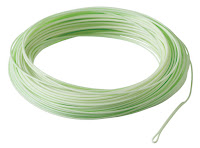Fly Fishing Lines
Fly lines come in a variety of forms. They may have varying diameters or tapered section or a level (even) diameter. A fly line may float, sink, or have a floating major section using a sinking tip.
A fly line consists of a challenging braided or monofilament core wrapped within a thick waterproof plastic sheath often created of polyvinyl chloride (PVC). Inside the case of floating fly lines, the PVC sheath is generally embedded with many “micro-balloons” or air bubbles and could also include silicone or other lubricants to provide buoyancy and decrease wear.
Fly lines also come in a variety of models for use in specific environments. These climates include fresh water, salt water, cold, or tropical temperatures, etc.
All fly lines are matched for the individual rod according to weight. Due to the fact the fly line and not the lure determine casting, fly rods are sized according towards the size of fly line and not the weight from the lure. Fly lines comes in a wide range of numbered sizes from a small #0 to a strong #16. Additionally they are available in many profiles such as double-tapered, weight-forward, shooting-head, etc.
Most fly lines are only around 90 feet long that is sufficient for sporting purposes. Specialized shooting-head lines having a quick, heavy front section and small-diameter backing are usually used for long-distance casting as well as competitive events.
To fill up the reel spool and insure an adequate reserve in case of a run by a potent fish, fly lines are often attached to a secondary line at the butt section which can be named backing. Fly line backing is usually composed of braided Dacron or Gelspun monofilaments. Backing varies in length according for the type of fish. Seventy-five yards is used for smaller sized freshwater species and as considerably as 400 yards is for large saltwater game fish.
All fly lines are equipped having a leader of monofilament or fluorocarbon fishing line generally tapered in diameter and referred to by the “X-size” (0X, 2X, and so forth.) of its final tip section or tippet. For example, a freshwater trout leader may have a butt section of 20 point test monofilament tapering by way of 15, 12, ten, and 8-pound test sections and terminating in a 5X tippet. A fly line is only as strong as its weakest link that is the final tippet section.
Exactly where are you able to find your equipment? Many locations carry fly fishing equipment. Neighborhood sporting goods stores are a good place to begin. You might desire to appear on the Internet for a place like Cabela’s or Bass Pro Shops. Orvis is an additional good place to find your fly fishing equipment.
Some towns and cities have specialty fishing retailers as well. These might be very useful areas to go as they will have all of the newest information on exactly where to fish, what to look for in certain pieces of equipment, and suggestions on what types of equipment would work best for you personally.
A fly line consists of a challenging braided or monofilament core wrapped within a thick waterproof plastic sheath often created of polyvinyl chloride (PVC). Inside the case of floating fly lines, the PVC sheath is generally embedded with many “micro-balloons” or air bubbles and could also include silicone or other lubricants to provide buoyancy and decrease wear.
Fly lines also come in a variety of models for use in specific environments. These climates include fresh water, salt water, cold, or tropical temperatures, etc.
All fly lines are matched for the individual rod according to weight. Due to the fact the fly line and not the lure determine casting, fly rods are sized according towards the size of fly line and not the weight from the lure. Fly lines comes in a wide range of numbered sizes from a small #0 to a strong #16. Additionally they are available in many profiles such as double-tapered, weight-forward, shooting-head, etc.
Most fly lines are only around 90 feet long that is sufficient for sporting purposes. Specialized shooting-head lines having a quick, heavy front section and small-diameter backing are usually used for long-distance casting as well as competitive events.
To fill up the reel spool and insure an adequate reserve in case of a run by a potent fish, fly lines are often attached to a secondary line at the butt section which can be named backing. Fly line backing is usually composed of braided Dacron or Gelspun monofilaments. Backing varies in length according for the type of fish. Seventy-five yards is used for smaller sized freshwater species and as considerably as 400 yards is for large saltwater game fish.
All fly lines are equipped having a leader of monofilament or fluorocarbon fishing line generally tapered in diameter and referred to by the “X-size” (0X, 2X, and so forth.) of its final tip section or tippet. For example, a freshwater trout leader may have a butt section of 20 point test monofilament tapering by way of 15, 12, ten, and 8-pound test sections and terminating in a 5X tippet. A fly line is only as strong as its weakest link that is the final tippet section.
Exactly where are you able to find your equipment? Many locations carry fly fishing equipment. Neighborhood sporting goods stores are a good place to begin. You might desire to appear on the Internet for a place like Cabela’s or Bass Pro Shops. Orvis is an additional good place to find your fly fishing equipment.
Some towns and cities have specialty fishing retailers as well. These might be very useful areas to go as they will have all of the newest information on exactly where to fish, what to look for in certain pieces of equipment, and suggestions on what types of equipment would work best for you personally.
